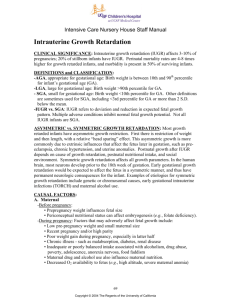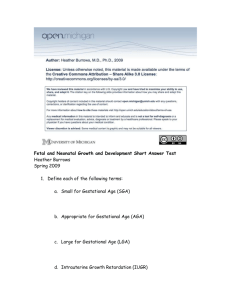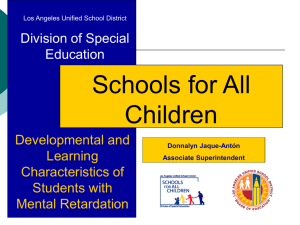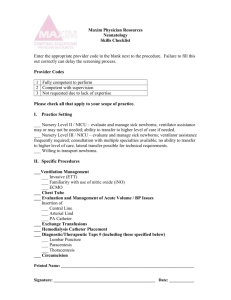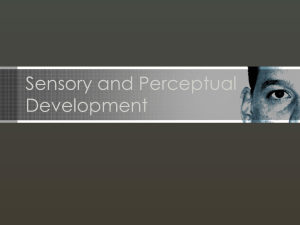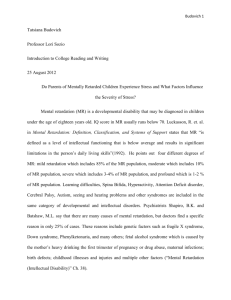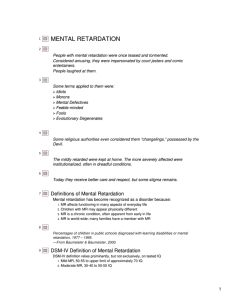renal regulation of microelement status of the newborns
advertisement
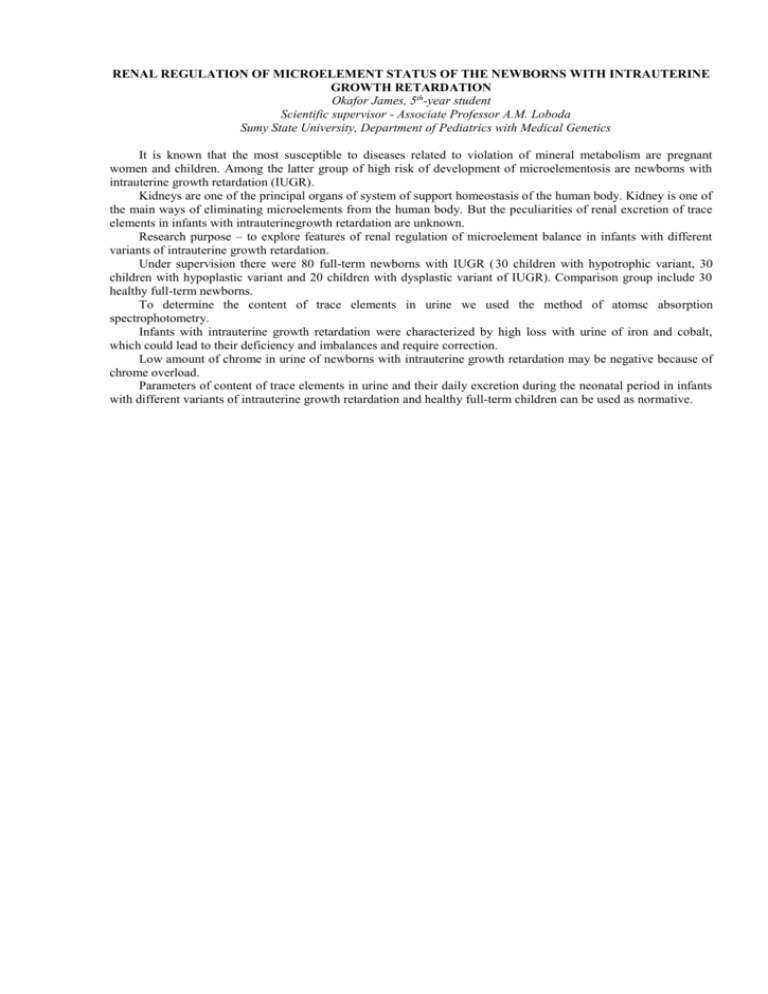
RENAL REGULATION OF MICROELEMENT STATUS OF THE NEWBORNS WITH INTRAUTERINE GROWTH RETARDATION Okafor James, 5th-year student Scientific supervisor - Associate Professor A.M. Loboda Sumy State University, Department of Pediatrics with Medical Genetics It is known that the most susceptible to diseases related to violation of mineral metabolism are pregnant women and children. Among the latter group of high risk of development of microelementosis are newborns with intrauterine growth retardation (IUGR). Kidneys are one of the principal organs of system of support homeostasis of the human body. Kidney is one of the main ways of eliminating microelements from the human body. But the peculiarities of renal excretion of trace elements in infants with intrauterinegrowth retardation are unknown. Research purpose – to explore features of renal regulation of microelement balance in infants with different variants of intrauterine growth retardation. Under supervision there were 80 full-term newborns with IUGR ( 30 children with hypotrophic variant, 30 children with hypoplastic variant and 20 children with dysplastic variant of IUGR). Comparison group include 30 healthy full-term newborns. To determine the content of trace elements in urine we used the method of atomsc absorption spectrophotometry. Infants with intrauterine growth retardation were characterized by high loss with urine of iron and cobalt, which could lead to their deficiency and imbalances and require correction. Low amount of chrome in urine of newborns with intrauterine growth retardation may be negative because of chrome overload. Parameters of content of trace elements in urine and their daily excretion during the neonatal period in infants with different variants of intrauterine growth retardation and healthy full-term children can be used as normative.

